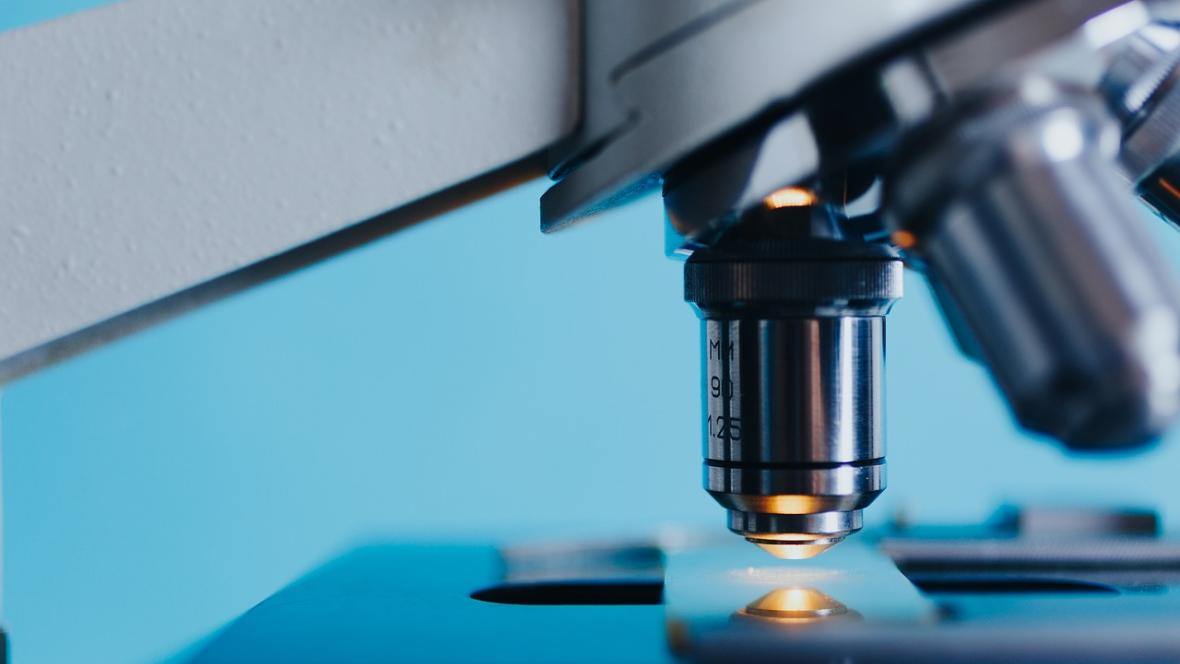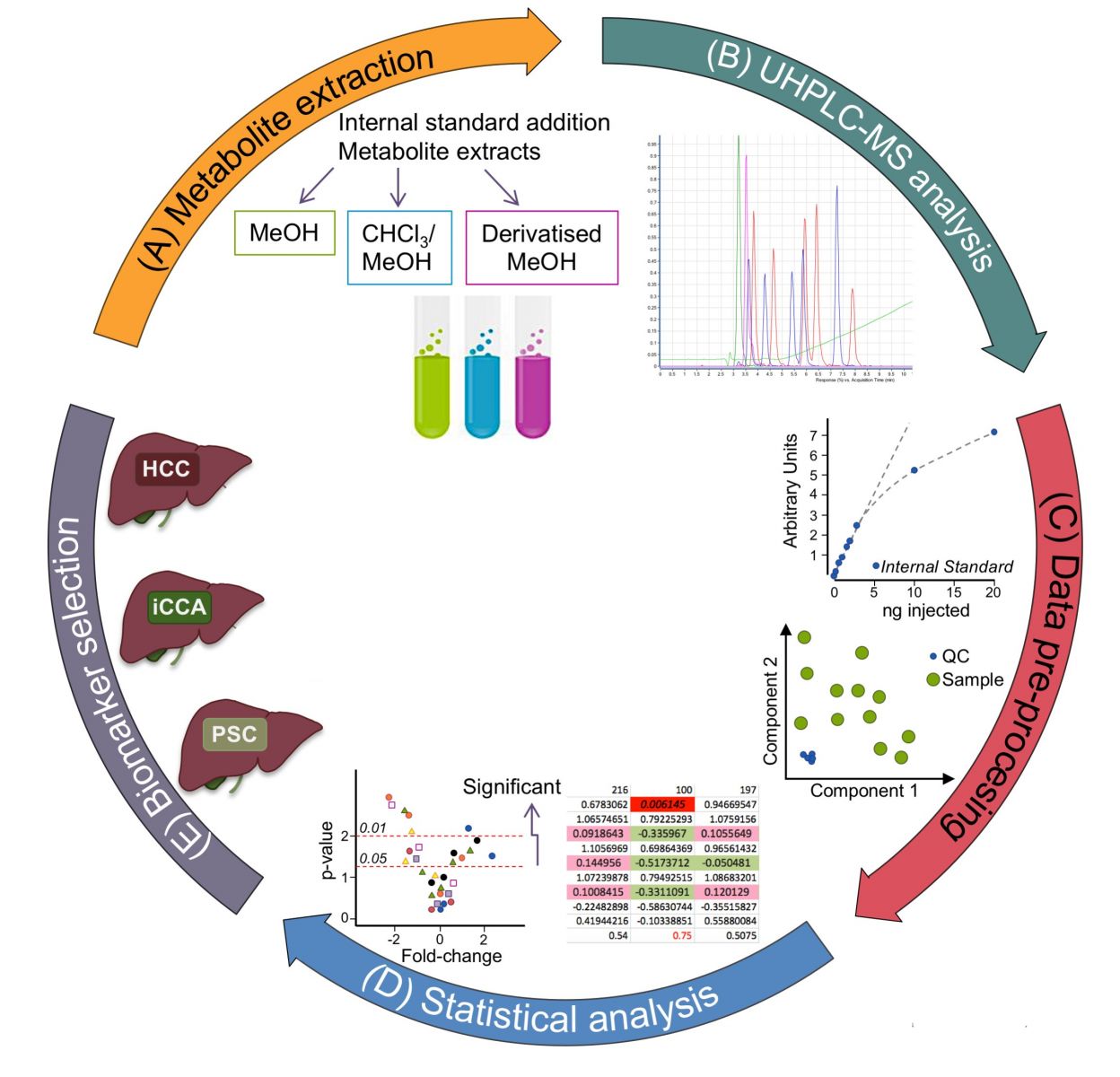Serum metabolomic analysis for the detection of preneoplastic liver damage in people with fragility increased by age

Introduction
The individual project "Serum metabolomic analysis for the detection of preneoplastic liver damage in people with frailty increased by age" aims to validate the results obtained in a recent study conducted in a small number of patients with liver tumors (https: // www. .ncbi.nlm.nih.gov / pubmed / 30325540) to confirm the diagnostic ability of a group of selected metabolites.
With advanced age it is more frequent that serious liver diseases appear as a result of exposure, to a greater or lesser extent throughout life, to different types of agents (alcohol, viruses, drugs, diets rich in fats and / or sugars). ). The liver has a high capacity for regeneration when it suffers damage, but when it occurs over a prolonged period of time, there is a chronic inflammation of the tissue, which is considered a risk factor for the development of liver tumors. In addition, we must bear in mind that the liver is becoming more sensitive to different aggressions in older people.
Hepatocellular carcinoma (HCC), which develops in hepatocytes, is the most common liver cancer, while cholangiocarcinoma (CCA), which develops in cells that form the ducts that carry bile from the liver to the intestine, It is more rare, but it is a very aggressive type of tumor, whose incidence has increased in recent years in Western countries. HCC develops in 90-95% of cases in cirrhotic livers due to alcoholic disease or viral hepatitis, while CCA can develop in patients with cirrhosis, with non-alcoholic fatty liver, with liver diseases associated with chronic cholestasis, such as cholangitis primary sclerosing (PSC), and also in subjects without identified liver damage.
Both types of tumors are characterized by a silent development, which justifies that they tend to be diagnosed in advanced stages, when patients are not candidates for surgery, which is the main potentially curative option. Considering both types of liver tumors, the diagnosis occurs mostly in people over 55 years. Figure 1 shows the incidence data recorded in Salamanca in the last 5 years with patients distributed by age groups at diagnosis, which are similar to those described in the rest of Spain and in European countries.
.jpg)
Figure 1. Incidence of liver tumors in Salamanca in the last 5 years distributed by age groups.
When patients present symptoms, these can be similar in both types of tumors, so a combination of radiological, biochemical and pathological anatomy tests is used, as well as the study of the patient's clinical history to make the diagnosis. Although radiological techniques have improved a lot in recent years, they do not always provide conclusive results. On the other hand, in some cases the location of the tumor prevents obtaining a biopsy and the tumor markers that are determined in blood to aid in the diagnosis, the alpha-fetoprotein (AFP) for HCC and the carbohydrate antigen 19-9 ( CA 19-9) for the CCA, they are not specific.
The obtaining of an accurate diagnosis is very important, since each type of tumor requires a treatment with specific drugs so that optimal results are obtained. These facts justify further investigation to identify specific and sensitive markers, if possible through a minimally invasive analysis in blood samples, which allows a definitive diagnosis of patients so that they can receive the most appropriate treatment and also allow them to follow the response of tumors during treatment.
Unlike studies that analyze tumor tissue, which is usually obtained at the time of tumor diagnosis, blood offers the possibility of measuring markers that allow the evolution of the disease to be monitored. High performance omic technologies are a novel alternative to identify useful markers for early and accurate diagnosis of cancer. Among these technologies, metabolomics, or the analysis of metabolites of low molecular weight (<1500 Da) in biological samples has great potential
The liver plays an essential role in a wide variety of metabolic processes that are critical for the maintenance of organism homeostasis. It is known that a damage in this organ can have a reflex in the serum, in terms of disequilibrium of the metabolites in serum due to the escape of compounds from the damaged cells and / or from the tumor cells with altered metabolic activities. Our hypothesis is that the analysis of certain metabolites in serum can help to reach a definitive diagnosis of the type of liver tumor.
Subjects of study and methodology
To carry out this study, serum samples from patients with diagnosis confirmed by pathological anatomy of HCC, CCA, fatty liver in different stages of the disease, primary sclerosing cholangitis (PSC) and other hepatopathies, with different age ranges (older 65 years old) and healthy subjects (control).
Figure 2 shows the different stages of the analysis of metabolites in serum by means of high performance liquid chromatography coupled to mass spectrometry (HPLC-MS / MS).
First, the samples are processed with different solvents (methanol, or a mixture of chloroform and methanol) to extract the metabolites grouped by families with similar physical-chemical properties (amino acids, triglycerides, sterols, bile acids, etc). The different extracts are injected into the HPLC-MS / MS apparatus, which separates them obtaining peaks corresponding to each compound. After processing the data, the concentration of each metabolite in the sample is obtained and, subsequently, a statistical analysis is carried out to determine which are specifically altered in each pathology and determine its diagnostic value for each type of pathology.

Figura 2. Flujo de trabajo para la determinación del perfil metabolómico. (A) La extracción de metabolitos se realiza fraccionando las muestras en grupos de especies con propiedades físico-químicas similares, tras la adición de un estándar interno. (B) Se utilizan tres plataformas para obtener el perfil del metaboloma en suero mediante UHPLC-MS. (C) Pre-procesamiento de los datos generados de las áreas de los picos de los cromatogramas correspondientes a los metabolitos detectados en cada inyección. Se define un rango lineal de detección de cada metabolito identificado. Se realiza una normalización intra- e inter-lote gracias a la corrección con el estándar interno y el control de calibración. (D) Una vez normalizados los datos, se realizan análisis de datos multivariados y univariados. (E) Selección de los mejores biomarcadores candidatos para el diagnóstico de cada tipo de enfermedad.
If specific and sensitive biomarkers are identified for the diagnosis of liver tumors and that allow to discriminate between HCC and CCA, elderly people could be followed in risk groups for the development of these tumors to detect them in the initial stages and improve their chances of healing.
References
- Banales JM, Cardinale V, Carpino G, Marzioni M, Andersen JB, Invernizzi P, Lind GE, Folseraas T, Forbes SJ, Fouassier L, Geier A, Calvisi DF, Mertens JC, Trauner M, Benedetti A, Maroni L, Vaquero J, Macias RI, Raggi C, Perugorria MJ, Gaudio E, Boberg KM, Marin JJ, Alvaro D. Expert consensus document: Cholangiocarcinoma: current knowledge and future perspectives consensus statement from the European Network for the Study of Cholangiocarcinoma (ENS-CCA). Nat Rev Gastroenterol Hepatol. 2016; 13: 261-80.
- Banales JM, Iñarrairaegui M, Arbelaiz A, Milkiewicz P, Muntané J, Muñoz-Bellvis L, La Casta A, Gonzalez LM, Arretxe E, Alonso C, Martínez-Arranz I, Lapitz A, Santos-Laso A, Avila MA, Martínez-Chantar ML, Bujanda L, Marin JJG, Sangro B, Macias RIR. Serum Metabolites as Diagnostic Biomarkers for Cholangiocarcinoma, Hepatocellular Carcinoma, and Primary Sclerosing Cholangitis. Hepatology 2019 doi: 10.1002/hep.30319
- Khan SA, Tavolari S, Brandi G. Cholangiocarcinoma: Epidemiology and risk factors. Liver Int. 2019 Mar 9. doi: 10.1111/liv.14095.
- Macias RI, Banales JM, Sangro B, Muntané J, Avila MA, Lozano E, Perugorria MJ, Padillo FJ, Bujanda L, Marin JJG. The search for novel diagnostic and prognostic biomarkers in cholangiocarcinoma. Biochim Biophys Acta 2018; 1864: 1468-1477.
- Macias RIR, Kornek M, Rodrigues PM, Paiva NA, Castro RE, Urban S, Pereira SP, Cadamuro M, Rupp C, Loosen SH, Luedde T, Banales JM. Diagnostic and prognostic biomarkers in cholangiocarcinoma. Liver Int. 2019 Mar 6. doi: 10.1111/liv.14090.


